The Enhance images feature in Microsoft Edge makes images in the browser crisp and clear. As follows from the feature description in recent Canary builds, Edge sends image URLs on the websites you browse to Microsoft's servers. So technically it can be used to track your online activity.
Advertisеment
Some time ago, users have found that the Edge browser is leaking browsing data due to a bug in the "Follow creators" feature. It was sending all your URLs to Bing servers, while it was supposed to check for content updates for select media channels.
A similar issue affects the Enhance images feature. When it is enabled, Microsoft Edge has the capability to enhance the way images are displayed on websites. The browser can adjust the brightness, contrast, and tones of an image to make it visually striking on your screen. Pay the attention to the feature description in the screenshot below, taken in Edge stable.
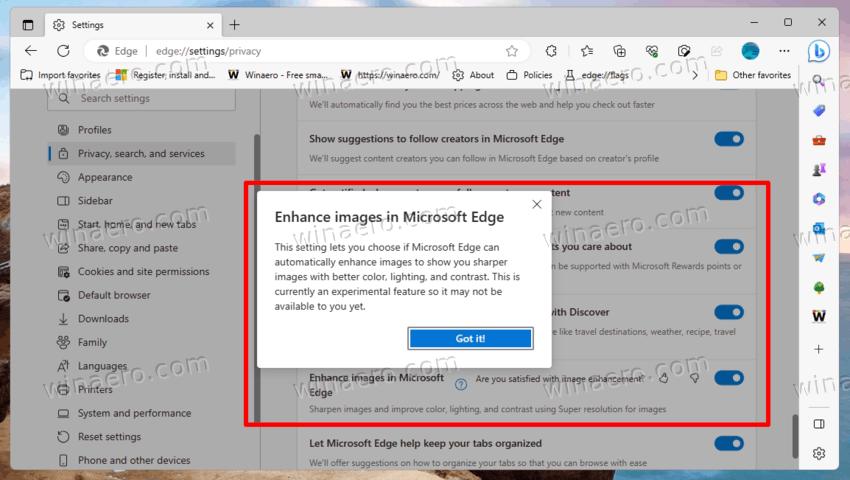 As noticed by @Leopeva64, Microsoft has updated the feature description. It now states that the browser will send image URLs to some Microsoft server.
As noticed by @Leopeva64, Microsoft has updated the feature description. It now states that the browser will send image URLs to some Microsoft server.
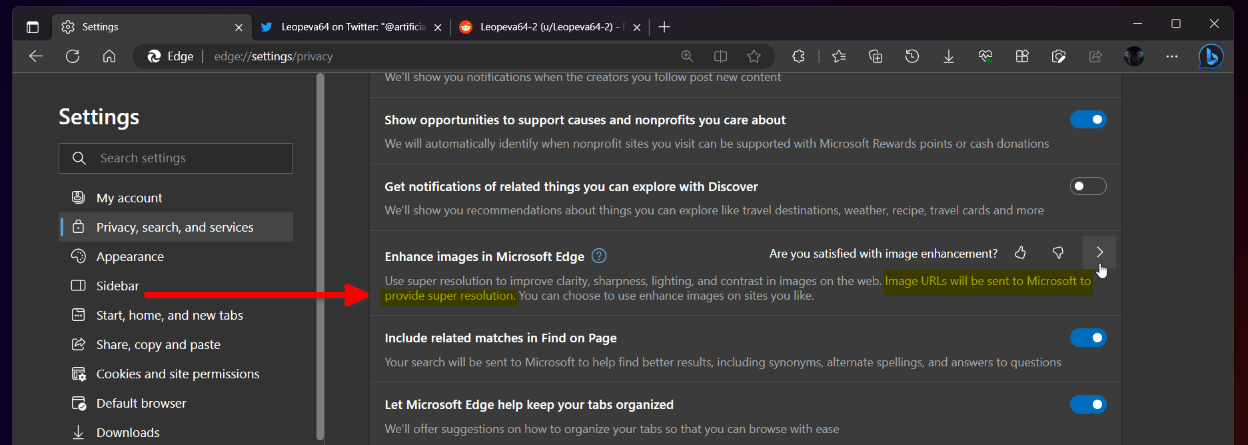
Actually, it is not clear if it was a local process at very beginning. But the feature description didn't initially mention the image URL transfer to Microsoft. Anyway, the image processing is now on remote servers, which are an additional way to track what users are browsing.
Microsoft yet to announce the change officially. Quite possible the company may state that the browser will now use AI to improve the image appearance, so they must be send to Microsoft.
Update 2023/06/15: Microsoft Edge's privacy document clarifies that the browser will send images encrypted and won't identify the user. It says: "When Image Enhancement is turned on, Microsoft Edge encrypts and transmits images to Microsoft servers to perform image enhancement. No user identifiers are included in the requests to the servers. The images are cached for 30 days to improve performance."
But it is worth noting that Edge includes a similar feature for the video content that works locally, at least as of this writing. Video Super Resolution can upscale a low-resolution video stream to 720p and enhance its image quality with help of AI.
If you aren't happy with the situation, you can disable the Enhance images feature in Edge. This will stop it from leaking your browsing data.
Disable the "Enhance images" feature in Microsoft Edge
- Press Alt + F to open the Edge menu.
- Navigate to Settings > Privacy, Search, and Services.
- On the right, turn off the Enhance images in Microsoft Edge option.
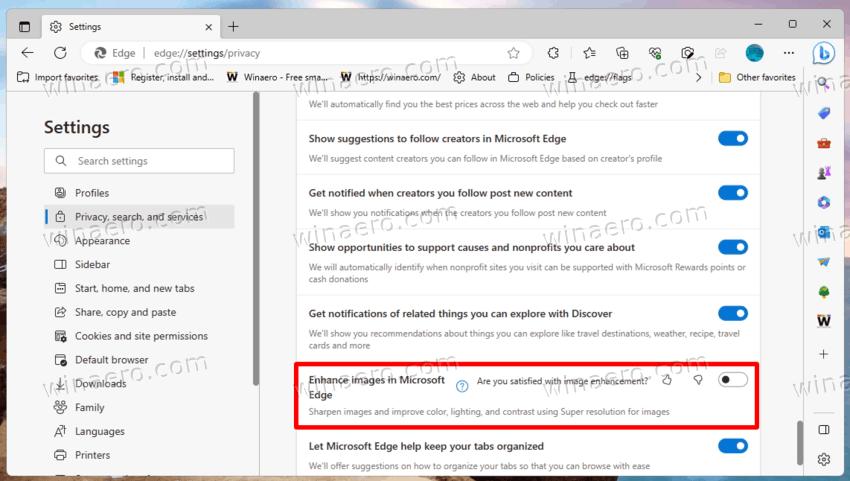
- Close the Edge settings tab.
This should stop the Edge browser from leaking your image URLs (via).
It is worth noting that Microsoft is rolling out the "Enhance images" gradually. Depending on which release channel you are in, the option may be missing in your browser. Or it can be disabled by default. @Leopeva64 noted that they see the change in the Canary version of the browser.
To ensure that the unwanted functionality will be disabled in any case, you can apply a group policy. If it is missing in your Edge right now, but will appear in a forthcoming update, the policy will keep it disabled!
Disable Edge Enhance images with Group Policy
- Press Win + R , type
regeditin the Run box, and hit Enter. - In the Registry Editor, navigate to the HKEY_LOCAL_MACHINE\SOFTWARE\Policies\Microsoft\Edge key.
- If the Edge subkey is missing, right-click the Microsoft key in the left pane, select New > Key, and name the new key Edge.
- Finally, right-click the Edge folder on the left, select New > DWORD (32-bit) value, and name it EdgeEnhanceImagesEnabled.
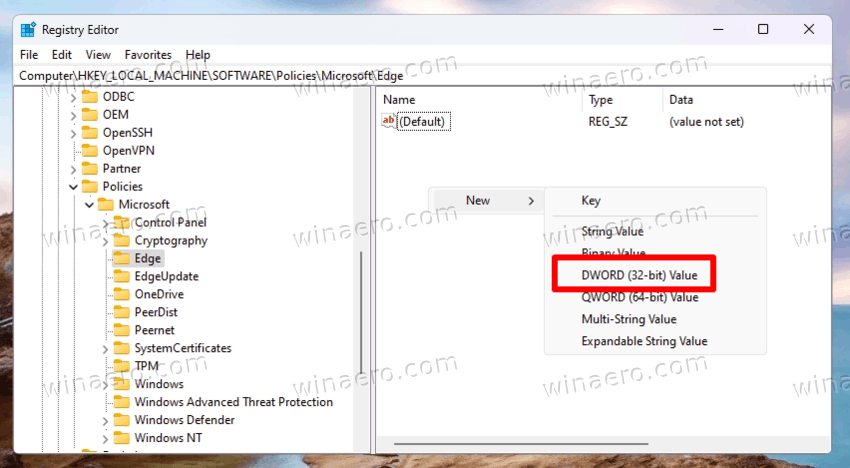
- Leave the value data for EdgeEnhanceImagesEnabled as 0.

- Open a new tab in Edge, type
edge://policy, and click on the Reload button.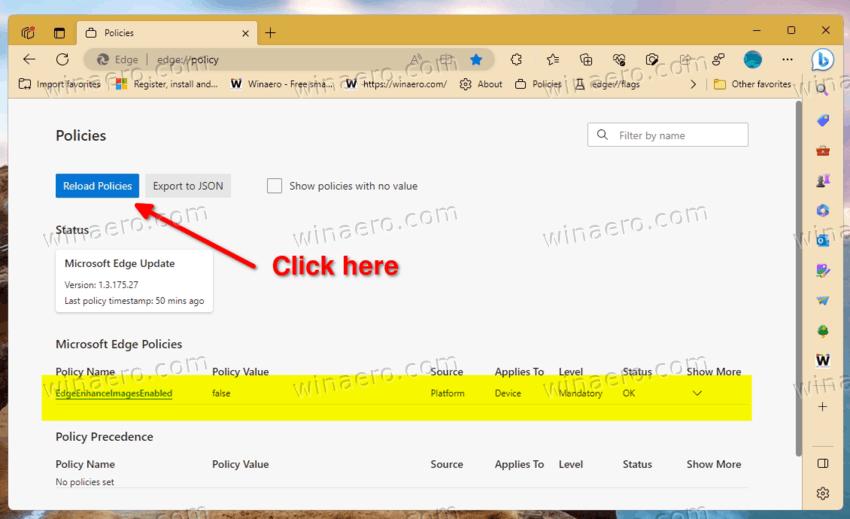
You are done. This way, you can be sure that EdgeEnhanceImagesEnabled is disabled if/when it will be available in your browser.
Ready-to-use REG files
To save your time, I have prepared two registry (*.REG) files. You can download them from this link. Extract the archive to any folder of your choice. You can place them directly to the desktop.
You'll get the following files.
-
Disable Enhance images in Edge.reg- this one applies the policy and stops the browser from improving the images. -
Enable Enhance images in Edge.reg- this file is the undo tweak that restores the defaults.

Double-click the "Disable..." REG file to apply the change, confirm the User Account Control Prompt, and the Registry entry.
To see the changes in the running Edge browser, don't forget to visit the edge://policies page, and reload the policies.
Apply the group policy from command prompt
In addition to the Registry files, one may want to apply the feature with a console command. This method is popular among users who deploy their preferences via a batch file. It is applicable in similar automation scenarios.
Do the following.
- Right-click the Start button, and select Terminal(Admin) from the menu.
- In the Terminal, type one of the following commands in either PowerShell or Command Prompt tab.
-
reg add HKLM\SOFTWARE\Policies\Microsoft\Edge /v EdgeEnhanceImagesEnabled /t REG_DWORD /d 0 /f- disable the image enhancing option in the browser.
-
reg delete HKLM\SOFTWARE\Policies\Microsoft\Edge /v EdgeEnhanceImagesEnabled /f- restore the defaults.
-
So, if you going to use the above commands in a batch file, don't forget to run it as Administrator(elevated).
Turn off the feature for specific websites
Forthcoming Edge versions will allow you to prevent the online image processing for specific websites. Microsoft has already improved the option in Edge Canary, so it allows specifying the sites where the feature should be always disabled. Similarly, you can manage a list of sites where the "Enhance images" option will become always enabled.
To turn off the Enhance images feature for specific websites, open the browser's menu, navigate to Settings > Privacy, Search, and Services > Enhance images in Microsoft Edge and click the Add button for the Never Enhance images for these sites list. Provide the website URL and you are good to go.
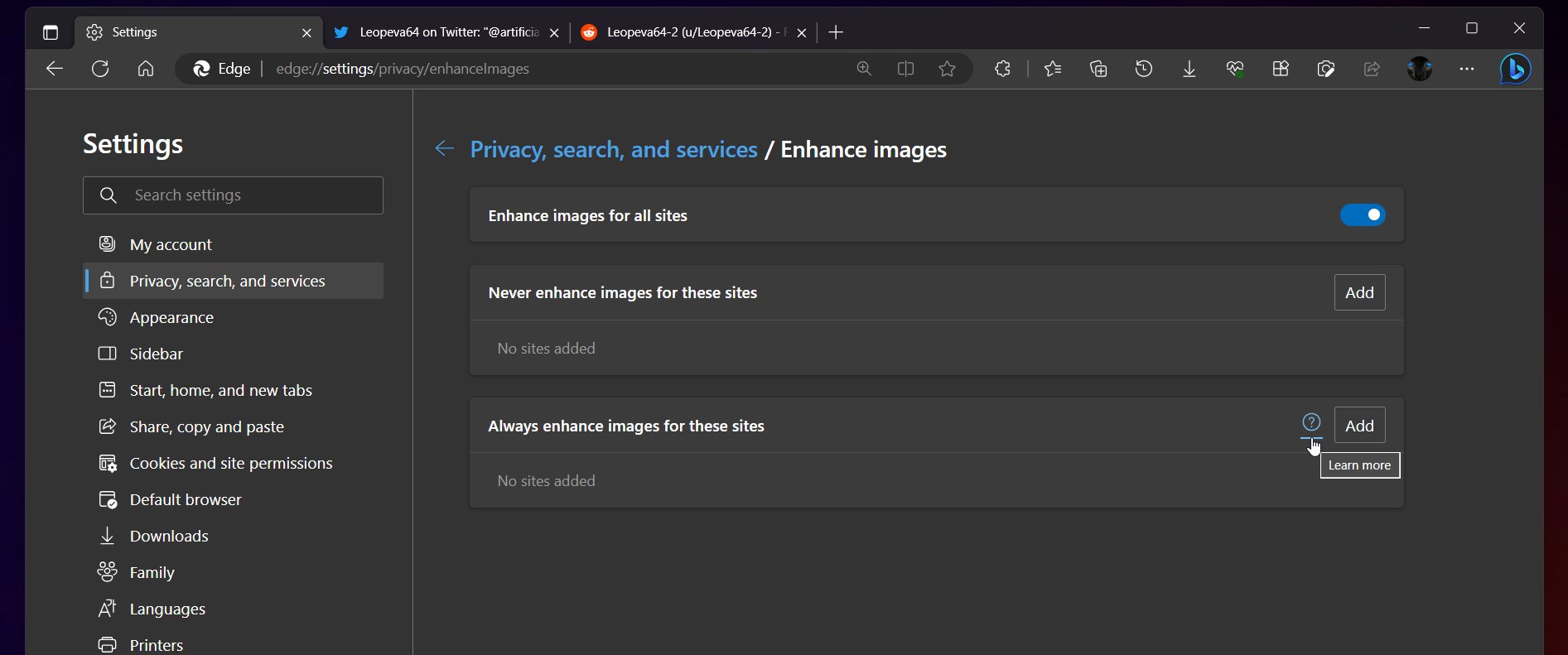
To build an exclusion list where the "Enhance images" is always enabled, similarly click on Add next to the Always Enhance images for these sites box.
That's it.
Support us
Winaero greatly relies on your support. You can help the site keep bringing you interesting and useful content and software by using these options:
